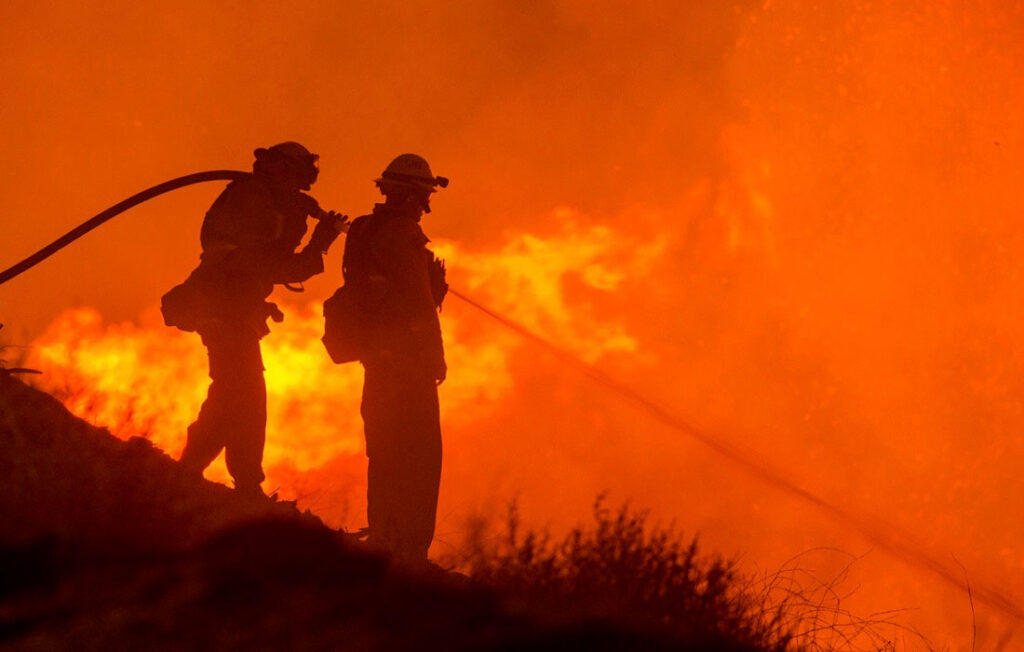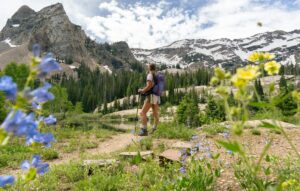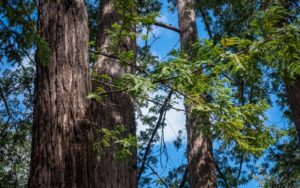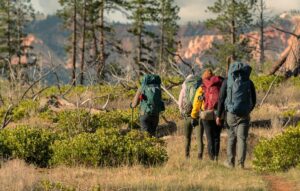- 1,289 total large fires
- 68,988 reported wildfire incidents
- 7+ million acres burned
- 2,717 structures reported destroyed
Updated: May 31, 2023
The Economic and Environmental Costs of Wildfires
The full scope of the dangers posed by wildfires can be as subtle as they are scary. We know these massive blazes destroy properties—homes, businesses, farms, historical sites—but this initial, physical destruction goes beyond burned buildings and scorched acres alone. The destruction of essential resources (water and gas lines, electrical wires) as well as the ecological harm left behind are all incredibly damaging to regions and can create long-lasting issues for those who once called these areas home.
In 2022 alone, the total cost to the U.S. as a result of wildfire suppression (firefighting) and damage reparation amounted to more than $830 million. That takes a huge economic toll; especially when considering the long-lasting damage will continue to accrue costs as residents and municipalities attempt to find their “new normal.”
The environmental harm caused to a region can also create long-lasting financial issues. Areas where large swaths of trees and forests have been burned can have future issues with mudslides and flooding, where soil is loose and unable to absorb excess water from storms (or even the firefighting efforts themselves). Air and water quality issues can also present a significant (and expensive) threat to communities, posing health risks for those who live there. Large scale animal and habitat-loss can result in further damage to surviving ecosystems, making them more susceptive to disease and degradation.
What Causes Wildfires? How to Prevent Wildfires and What You Can Do to Help
To fully understand how humans can play a role in the battle against wildfires, we must first answer the most critical question: how do wildfires start?
Unfortunately, for approximately 85% of all recorded wildfires, the answer is: humans. From arson to the careless disposal of cigarette butts to unattended campfires, there is a wide array of ways humans have been known to ignite these fires. As bad as this statistic is, it also means there is a huge opportunity here for us—as people—to take responsibility and understand our role when it comes to preventing forest fires.
The truth is climate change is regularly increasing the risk of wildfires throughout the world. Today, “wildfire season” is year-round in many places due to regularly increasing temperatures and drought. If you live in a wildfire zone, help reduce the threat of fire on your property by hardening your home to ember intrusion and creating a defensible space clear of grass, trees, and shrubs around the perimeter.
Live in a wildfire zone? Visiting a region prone to fires? There is plenty you can do to help prevent fires, no matter where you are. First and foremost: be conscious of your surroundings. This means:
- DO NOT light fires during droughts.
- When exiting a campsite, make sure to FULLY extinguish the campfire (the embers should be cold to the touch).
- DO NOT create a campfire near brush, timber, or grass; fires should be built over bare soil and/or rock.
- DO NOT burn debris when it is windy; sparks can scatter and start fires nearby.
- DO NOT mow on hot days (rocks can spark when hit with blades).
- USE firework precautions and stay up to date on outdoor grilling safety.
- When driving through areas at higher risk for fire, make sure your vehicle is well-maintained and does not pose a greater risk to the environment (e.g., throwing sparks from a tow chain).
- DO NOT park a warm vehicle on dry grass or debris that could catch fire.
- Educate yourself on BAER and how the post-wildfire recovery process works.
Wildfires and Climate Change
With massive heatwaves hitting continents around the world, breaking temperature records and forcing countries to rethink their energy consumption and how to ensure citizen safety during extreme weather, it’s no wonder that climate change has once again become a huge topic of conversation. Since 1950, the world has warmed by 1.1 degrees Celsius; a trend that continues to persist and will continue unless immediate action is taken.
As the world continues to warm, we are likely to see the same patterns we see today intensified. Extreme heat leads to severe drought, making entire ecosystems unable to withstand natural disasters like wildfires and flooding.
But, unlike wildfire safety tips which are relatively straightforward, how can you act against something as big as climate change—especially when the repercussions are already coming on fast and strong?
- Do your RESEARCH and LISTEN to the experts. Together, we can build community resilience and help protect against dangerous threats like wildfires.
- Do your part to REDUCE your carbon footprint. While climate change needs to be addressed on a much bigger scale, we can individually address our habits to make a positive change. Consider how much water and energy you use, how much waste you produce, and where you can make changes to reduce your footprint.
- SPEAK to your elected officials. A lot. Call, email, mail letters—let your local and state representatives know that climate change is a BIG problem, and you want them DO something about it.
- Create post-wildfire recovery plans for your property. Share these with others in your community and encourage them to do the same. Recovery plans can help prevent damage before it occurs and help communities recover faster. Plus, you may be able to prevent additional problems from occurring, such as flooding and erosion.
- Help restore local ecosystems. If you live in an area where wildfires have struck, restoring ecosystems is absolutely critical to reducing the negative environmental and health impacts of the fire. Consider planting native trees and plants that are more resilient to current and future climate change.
Support Nonprofits on the Frontlines of Wildfires and Climate Change
Volunteer and donate. These are the two most common calls-to-action when it comes to natural disaster recovery. However, due to the unique dangers posed by wildfires, those actively battling the fires (as well as the scientists who help to control fire paths and assist in post fire threat analysis) are employed professionals, not volunteers.
If you want to do the most to support community and environmental recovery post-wildfire, it’s critical to think about the big picture of addressing climate change and building environmental resilience to reduce the negative effects of global warming. We’ve put together a list of ten organizations working directly in these spaces to help you get involved and make a positive impact right away.
American Forests is helping to build and restore resilient forests that can stand up against wildfire, drought, and pests. By providing forestry research and resources to the public, American Forests is helping to prevent natural disasters, such as wildfires, from having such a drastically negative impact.
Conservation International protects and conserves millions of acres of critical habitats in countries around the world. The goal of this work is to stabilize the global climate through restoring and strengthening nature and reducing CO2. The organization also promotes investing in long-term climate solutions.
Protecting wildlands, habitats, and wildlife throughout the Pacific Northwest, Conservation Northwest is dedicated to preserving and redeveloping key ecosystems and habitats that are at risk due to both human and natural causes. This work includes wildfire education and prevention.
The only conservation organization dedicated entirely to protecting the Columbia Gorge in Oregon, Friends of the Columbia Gorge is helping to build long-term resilience for the natural habitats and ecosystems throughout the region in order to protect it from the negative impacts of climate change and its increased risk for wildfires. Volunteer organizing played a significant role in post-fire remediation after the devastating Eagle Creek fire in 2017.
NFF addresses the pressing need for reforestation in areas that have been negatively impacted or threatened by climate change, natural disasters, and more. The NFF works to plant trees, educate people about their local protected forests, and ensure the National Forests remain open spaces that can be appreciated by everyone for generations to come.
A 2021 report from The Nature Conservancy outlined a changing need for approaching and investing in wildlife resilience. TNC reviews the pressing need to support communities with the education and resources necessary to prepare for and reduce the risk of wildfires, as well as necessary procedures, legislation, and more. TNC also prioritizes tackling climate change and provides helpful resources for individuals, communities, and governments to make positive change.
Making it simple for everyone to plant trees, One Tree Planted is a Vermont-based nonprofit helping to mitigate forest loss around the world. OTP’s Million Tree Challenge encourages individuals and businesses to plant more trees to battle climate change and assist in wildlife conservation and wildfire recovery.
Oregon Parks Forever has been helping replant burned forests after the tragic Oregon fires in 2020, which burned more than one million acres of trees. Replanting trees helps with promoting clean air, water, and soil in these damaged landscapes.
Across America, The Wilderness Society conserves connected landscapes, tackling issues stemming from the climate crisis, and educating communities on conservation practices. As the organization acquires and improves the maintenance of these landscapes, the land is able to better naturally defend against disasters like wildfires.
Want more information about becoming an EarthShare Nonprofit Partner and how you can get involved? Know of a wildfire-focused environmental nonprofit that should be added to this list? Reach out to nonprofits@earthshare.org to connect with us!




